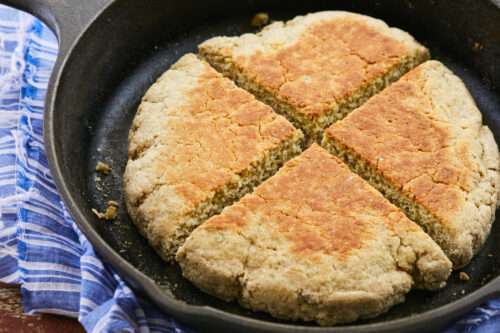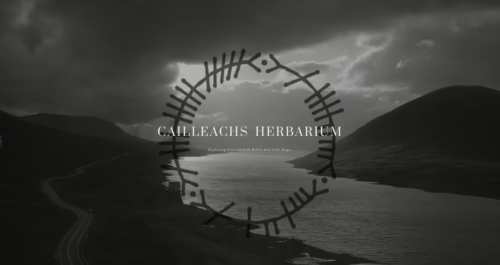Marysmass, Mary’s mass, Féil-Moire (Mary’s day) the Big St Marys Feast or the Assumption day happens on the 15th of August. Personally, I think it’s a great example of the syncretic nature of Scottish Folk practices and pre reformation kirk activities. The festival itself dates to the medieval period and apparently even back to the 7th century.
In the publication Ancient Church Dedications in Scotland, James Mackinaly, 1910, mentions “certain festivals instituted from time-to-time formed landmarks in the growth of the Virgin’s cultus. Among these maybe mentioned the Feast of the Purification or Candlemas (2nd February also related to Brid and Imbolc), introduced in the sixth century, the Feast of the Annunciation or Lady Day (25th March – also a day associated with the Cailleach and Sheelas day) , the Feast of the Assumption ( 15th August near the old date Lunastal) , and the Feast of her Nativity (8th September – maybe a reach but near the autumn equinox), all three dating from the seventh century.”
I think this is interesting from a folk magic and historical perspective. A lot of religious conversion was actively taking place in Scotland around this time. For example, St Columba left Iona starting his monastery on Lindisfarne in 563. I’m certain this involved syncretising, mixing and muddling of older beliefs with newer beliefs. There was no one cut off point, no clean conversaion, no matter what the church establishment would like to think. I’m not surprised there’s a tenuous relationship between these older dates of festivals and new ideas, especially given the calendar changes to follow. I do realise this is an academically fringe and unpopular/controversial idea. Though I would add I’m not saying these are surviving “paganisms”. I am saying within them there is the potential for “pagan” survivals.
La Féill-Moire – Marysmass or the day of Mary is a celebration of the virgin Mary falling (unsurprisingly) almost on the old calendar date for the start of Lúnastal or Lughnasa – commemorated traditionally at the start of August. Marysmass celebrates the Virgin Marys bodily entry into heaven. It the lore we have it also shares a link to the start of harvest especially with the focus on the Bannock cooking and grinding of corn and might be a more sanitised version of Lunastal.
At Marymass Mary was crowned queen of heaven. She would hold supreme power there. That very fact is mind blowing …this idea should reverberate through time and deeply with each of us for what this means.
In an example of folk practices and syncretism with the Christian faith according to Macfarlane (Geog collection, Vol II) we have the with tradition of the small chapel found on Kilmoire (from Cill Moire ‘church of Mary’), on the southern side of a little green mound at Mealloch, on the island of Barraigh (Barra). Folks would go to gather “a certaine earth within the Chapell which if annie man wold carrie the samen with him to the sea, and if the wind or stormy strong weather were cruell and vehement, if he wold caste a little of this earth into the sea it wold pacifie the wind and the sea wold grow calm immediate”. This custom is also attested to, the relation of Mary and smooth waters in the Carmina Gadelica Vol I with the rhyme from sea men:
“The day of Mary the Great of fame,
Ward off from us the storm from the West.”
Carmina Gadelica, Vol I
We see examples of other quarter festival days brought to bear on Marymass following examples of a fire rite, the marking of boundaries, blessing with fire and of course no traditional day would be complete without a Bannock and a fair day.
The blessed fire was recorded by Brown, in Ayrshire, where folks would kindle a large fire (called a ‘tawnle’) of wood upon a prominent place in the parish and would have a celebration around it. Interestingly dancing and celebrations on this day are recorded near me, in Kelso, in 1863 in the Naturalists club publication of the same date which suggests Marymass wasn’t just a west coast Scotland celebration, but I would need to explore this in more detail. It’s not surprising though when Dryburgh Abbey, near Kelso, was under the invocation of the Virgin and Marysmass a very special day for her.
Alexander Carmicheal talks about this day quite extensively (for him) in the Carmina Gadelica Vol I. Carmicheal mentions cooking what is called Mary’s Bannock – The ‘Moilean Moire’ on this fire. The ‘Moilean Moire’ was made on Marysmass by folks who would go early into the fields and pluck ears of corn (this is a term we use for lots of wheat). They would lay the ears of wheat on warm stones exposed to the sun to dry. When dry they would husk them by hand, winnow them in a fan, grind it in a Quern (on a Friday according to the song), knead it in a sheep skin and form it into a Bannock, the ‘Moilean Moire’, the fatling of Mary, was then ready.

A Typical Bannock
This Marysmass Bannock would be roasted on a fire of sacred wood like Rowan, or other sacred woods(he neglects to mention) as we see at the other quarter days festivals. Following the cooking of this the husbandman would pass bits to his family. First to his wife and then to his children in order of age. Together they would sing the “Iollach Mhoire Mhathar” – the Pean of Mary Mother. Those who appealed to Mary Mother would be protected from scathe (harm) till the day of their death.
The interesting part to me speaking to older customs is the family would walk deosil (or sunwise) around the fire, the father leading followed by the wife and children in age order. They would complete circling the fire and then place embers with bits of old iron into a pot or pan then carry this deiseal around the outside of the house, and sometimes around the steadings, fields and flocks gathered in for the purpose all the while the family would sing the praise to Mary Mother.
I find this a potential fascinating survival of older traditions the fire, The praise singing, the iron and the circumambulating together is very old and is represented in many other festivals and folk magic practices. You can find examples at both Bealtainn and samhuinn for instance
The words for “Iollach Mhoire Mhathar” – the Pean of Mary Mother have been suggested as follows
On the feast-day of Mary the fragrant
Mother of the Shepherd of the flocks
I cut me a handful of the new corn
I dried it gently in the sun
I rubbed it sharply from the husk
With my own palms
I ground it in a quern on Friday
I baked it on a fan of sheep skin
I toasted it to a fire on Rowan
And I shared it round my people
I went sunwise round my dwelling
In the name of Mary Mother
Who promised to preserve me,
Who did preserve me,
And who will preserve me,
In peace, in flocks
In righteousness heart
In labour, in love
In wisdom, in mercy
For the sake of Thy Passion
Thou Christ of grace
Who till the day of my death,
Wilt Never forsake me,
Oh Till the day of my death
Wilt never forsake me,
Carmina Gaelic Vol I
You can access the Gaelic version in the Carmina Gadelica Vol I, online for free, here.
Today the Marymass festival is still celebrated in Irvine in North Ayrshire where it was reinvigorated as a tradition as it is today from its roots back in the 1920’s. You can go see it every year and still take part in these living folk customs with a very old providence.


2 comments
Fascinating! Thank you.
you are very very welcome!